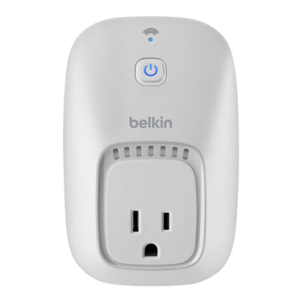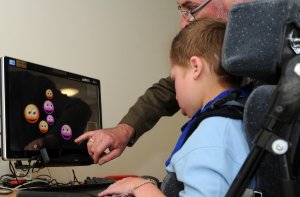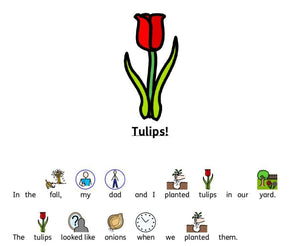2014 AT trends -- AT and the mainstream tech
This is the third of three posts about trends we see effecting AT in the coming months written by Bogdan Pospielovsky, Business Development Manager at Bridges. What trends have we missed? Comment, rant, rave or write directly to Bogdan, bogdan@bridges-canada.com.
 Smart, connected objects with wireless and mini computers on board have hit the mainstream zeitgeist with the launch (and swift $3.2 billion dollar purchase by Google) of the Nest thermostat.
The Internet of Things could be a boon to anyone with limited mobility and the possibilities for improving independence for those with cognitive and sensory challenges are endless: automating basic tasks, notifying individuals of scheduled tasks, connecting with communication devices to launch task/object specific access or communication apps for a specific circumstance etc. etc.
Ablenet has reviewed a couple, most recently the Belkin WeMo an iPhone/Android controlled electric switch and the Phillips Hue, wireless lighting.
[caption id="attachment_1369" align="aligncenter" width="300"]
Smart, connected objects with wireless and mini computers on board have hit the mainstream zeitgeist with the launch (and swift $3.2 billion dollar purchase by Google) of the Nest thermostat.
The Internet of Things could be a boon to anyone with limited mobility and the possibilities for improving independence for those with cognitive and sensory challenges are endless: automating basic tasks, notifying individuals of scheduled tasks, connecting with communication devices to launch task/object specific access or communication apps for a specific circumstance etc. etc.
Ablenet has reviewed a couple, most recently the Belkin WeMo an iPhone/Android controlled electric switch and the Phillips Hue, wireless lighting.
[caption id="attachment_1369" align="aligncenter" width="300"] WeMo switch from Belkin[/caption]
The problem inhibiting the entry to this accessibility nirvana will be a familiar one; competing and conflicting standards stymieing AT developers . But expect the Internet of Things to open a whole new world of accessibility and support options that in the short term will tantalize people working in the field of AT.
WeMo switch from Belkin[/caption]
The problem inhibiting the entry to this accessibility nirvana will be a familiar one; competing and conflicting standards stymieing AT developers . But expect the Internet of Things to open a whole new world of accessibility and support options that in the short term will tantalize people working in the field of AT.
 Eyegaze system in Penn Hall School in Wolverhampton UK. Smartbox UK.[/caption]
The price drops over the past three years of eye gaze technology has effected more than just AT funders. Tobii’s PCEye Go is not just affordable at a less than $3000 price point, it is a simple USB plug-in which means school districts think of it as something manageable and supportable. A lower price point reduces that intimidation factor. Look to eye-gaze to continue to appear in classrooms as an accessibility tool. Not just for physically challenged individuals but cognitive and sensory challenged students that usually would just have touch or switch scanning as an option: girls with Rett’s syndrome, profound cognitive delay, etc. That price also makes it available to school budgets for congregated classroom or resource rooms. So we’ll probably see more eye-gaze in classrooms as an open access tool tied to the goal of the activity not just for the needs of one specific prescribed student.
--Bogdan Pospielovsky
bogdan@bridges-canada.com
Eyegaze system in Penn Hall School in Wolverhampton UK. Smartbox UK.[/caption]
The price drops over the past three years of eye gaze technology has effected more than just AT funders. Tobii’s PCEye Go is not just affordable at a less than $3000 price point, it is a simple USB plug-in which means school districts think of it as something manageable and supportable. A lower price point reduces that intimidation factor. Look to eye-gaze to continue to appear in classrooms as an accessibility tool. Not just for physically challenged individuals but cognitive and sensory challenged students that usually would just have touch or switch scanning as an option: girls with Rett’s syndrome, profound cognitive delay, etc. That price also makes it available to school budgets for congregated classroom or resource rooms. So we’ll probably see more eye-gaze in classrooms as an open access tool tied to the goal of the activity not just for the needs of one specific prescribed student.
--Bogdan Pospielovsky
bogdan@bridges-canada.com
The internet of things
 Smart, connected objects with wireless and mini computers on board have hit the mainstream zeitgeist with the launch (and swift $3.2 billion dollar purchase by Google) of the Nest thermostat.
The Internet of Things could be a boon to anyone with limited mobility and the possibilities for improving independence for those with cognitive and sensory challenges are endless: automating basic tasks, notifying individuals of scheduled tasks, connecting with communication devices to launch task/object specific access or communication apps for a specific circumstance etc. etc.
Ablenet has reviewed a couple, most recently the Belkin WeMo an iPhone/Android controlled electric switch and the Phillips Hue, wireless lighting.
[caption id="attachment_1369" align="aligncenter" width="300"]
Smart, connected objects with wireless and mini computers on board have hit the mainstream zeitgeist with the launch (and swift $3.2 billion dollar purchase by Google) of the Nest thermostat.
The Internet of Things could be a boon to anyone with limited mobility and the possibilities for improving independence for those with cognitive and sensory challenges are endless: automating basic tasks, notifying individuals of scheduled tasks, connecting with communication devices to launch task/object specific access or communication apps for a specific circumstance etc. etc.
Ablenet has reviewed a couple, most recently the Belkin WeMo an iPhone/Android controlled electric switch and the Phillips Hue, wireless lighting.
[caption id="attachment_1369" align="aligncenter" width="300"] WeMo switch from Belkin[/caption]
The problem inhibiting the entry to this accessibility nirvana will be a familiar one; competing and conflicting standards stymieing AT developers . But expect the Internet of Things to open a whole new world of accessibility and support options that in the short term will tantalize people working in the field of AT.
WeMo switch from Belkin[/caption]
The problem inhibiting the entry to this accessibility nirvana will be a familiar one; competing and conflicting standards stymieing AT developers . But expect the Internet of Things to open a whole new world of accessibility and support options that in the short term will tantalize people working in the field of AT.
The rise of word prediction
Word prediction (WP) and rate reduction is now about two decades old and like any technology has seen its popularity wax and wane. Over the past decade computer power caught up to voice recognition's (VR demands and word prediction was built into more and more AT as a feature. Unfortunately word prediction quality varies wildly in performance and usefulness depending on the particular software. So word prediction not working for a student because of the quality of prediction often effected its recommendation. Anyway, why bother with WP if you can just use voice recognition and ditch the keyboard entirely? What’s changing that perception? Two factors. A realization that inconsistent success with VR might not be because of a lack of technology performance, but because it might not address the writing challenge the student has. The other factor is that word prediction is becoming more common and useful in handheld devices like smartphones and tablets, inspiring people to give it another look. Inexpensive quality iPad versions of Co:Writer and other word predictors means users can more easily look at all the word predictor tools and pick one that works well for them in whatever computing platform they use for generating text (iPad, Windows/Mac PC etc.). And because Word Prediction is becoming more ubiquitous in mainstream tech, it's less intimidating as a speciality tool.Eye-gaze goes mainstream AT
[caption id="" align="aligncenter" width="300"] Eyegaze system in Penn Hall School in Wolverhampton UK. Smartbox UK.[/caption]
The price drops over the past three years of eye gaze technology has effected more than just AT funders. Tobii’s PCEye Go is not just affordable at a less than $3000 price point, it is a simple USB plug-in which means school districts think of it as something manageable and supportable. A lower price point reduces that intimidation factor. Look to eye-gaze to continue to appear in classrooms as an accessibility tool. Not just for physically challenged individuals but cognitive and sensory challenged students that usually would just have touch or switch scanning as an option: girls with Rett’s syndrome, profound cognitive delay, etc. That price also makes it available to school budgets for congregated classroom or resource rooms. So we’ll probably see more eye-gaze in classrooms as an open access tool tied to the goal of the activity not just for the needs of one specific prescribed student.
--Bogdan Pospielovsky
bogdan@bridges-canada.com
Eyegaze system in Penn Hall School in Wolverhampton UK. Smartbox UK.[/caption]
The price drops over the past three years of eye gaze technology has effected more than just AT funders. Tobii’s PCEye Go is not just affordable at a less than $3000 price point, it is a simple USB plug-in which means school districts think of it as something manageable and supportable. A lower price point reduces that intimidation factor. Look to eye-gaze to continue to appear in classrooms as an accessibility tool. Not just for physically challenged individuals but cognitive and sensory challenged students that usually would just have touch or switch scanning as an option: girls with Rett’s syndrome, profound cognitive delay, etc. That price also makes it available to school budgets for congregated classroom or resource rooms. So we’ll probably see more eye-gaze in classrooms as an open access tool tied to the goal of the activity not just for the needs of one specific prescribed student.
--Bogdan Pospielovsky
bogdan@bridges-canada.com
- 9539015





Comments 0